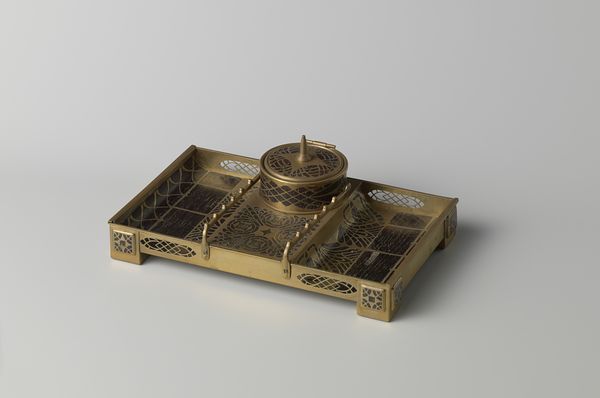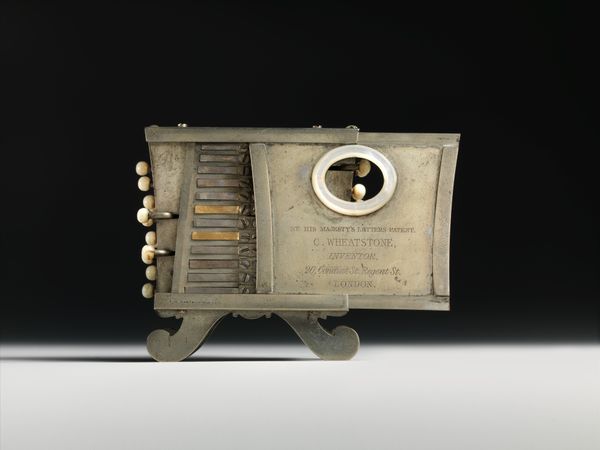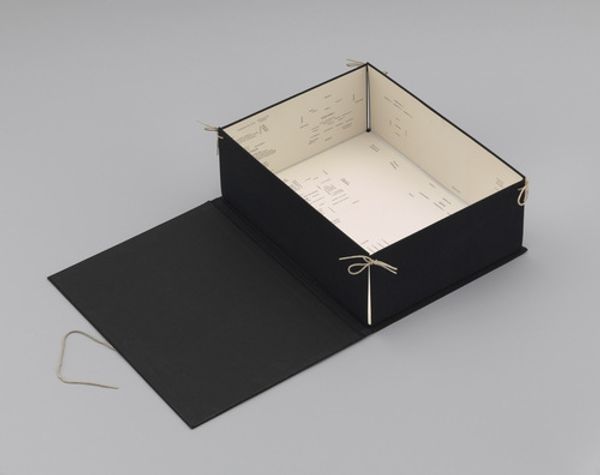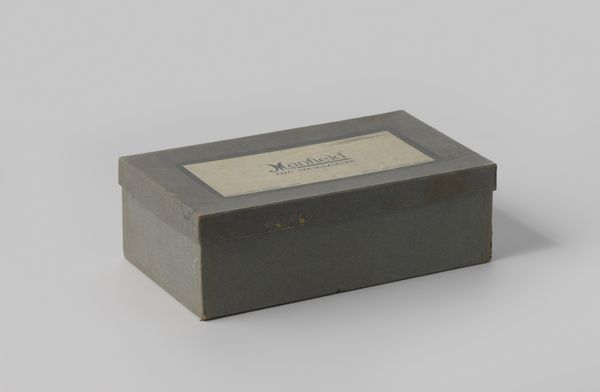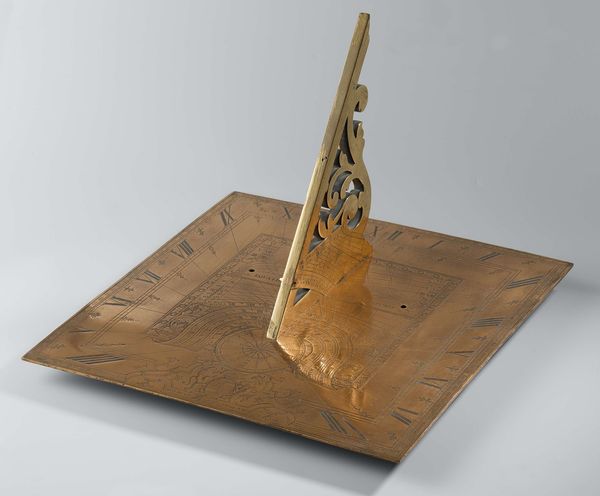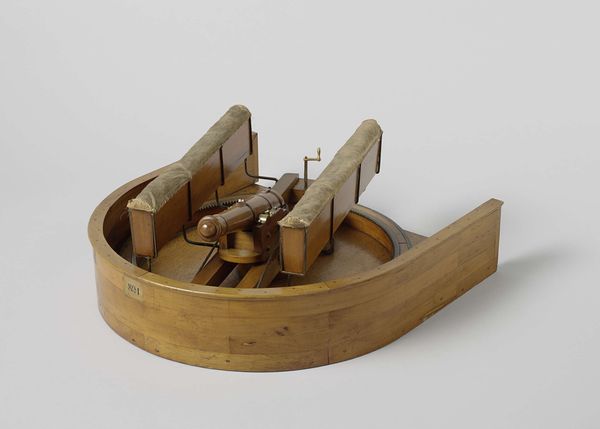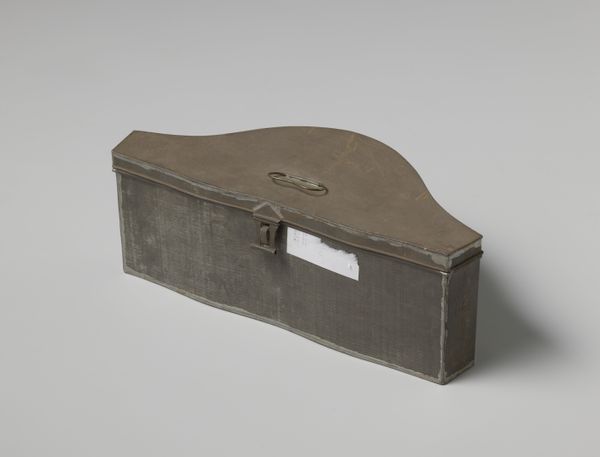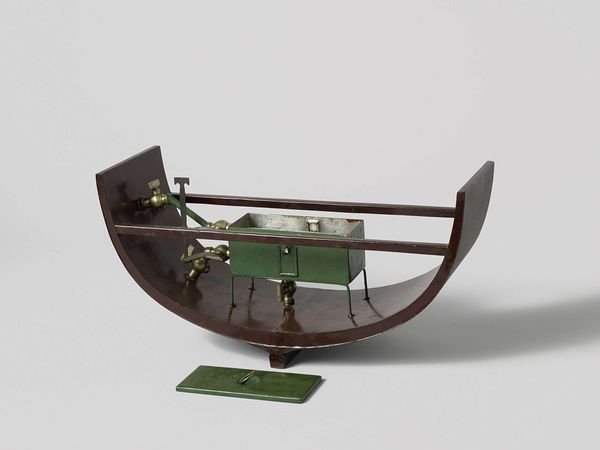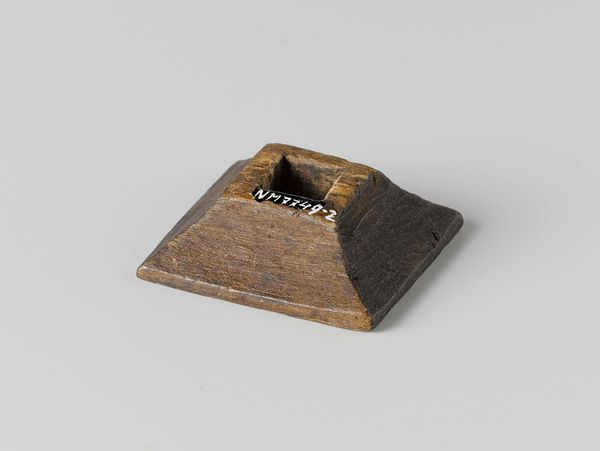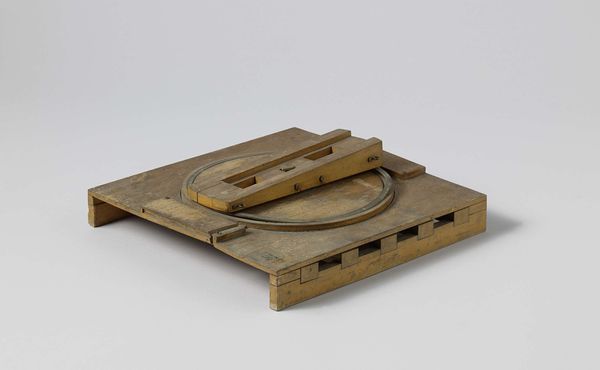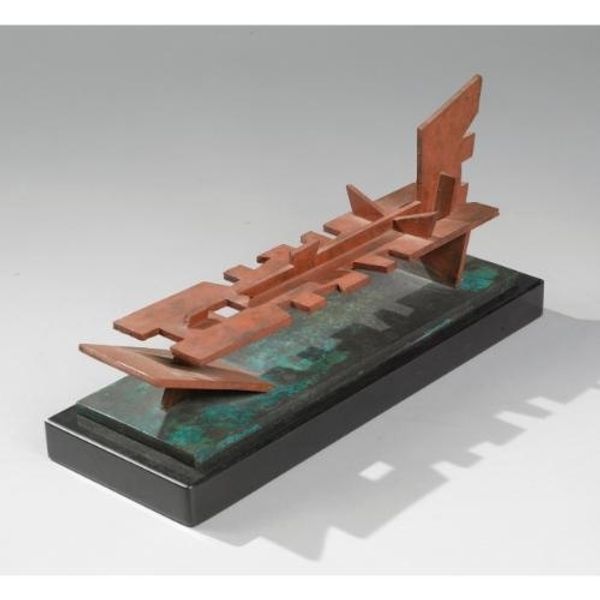
mixed-media, metal, sculpture, wood
#
mixed-media
#
metal
#
geometric
#
sculpture
#
wood
#
history-painting
#
academic-art
Dimensions: height 12.5 cm, width 36.5 cm, depth 25 cm
Copyright: Rijks Museum: Open Domain
Curator: This object, dating from between 1860 and 1863, presents us with a “Model of a Floating Battery” crafted using mixed media—wood, metal, and likely other materials. Editor: It strikes me immediately as austere, almost melancholic in its geometric simplicity. The stark contrasts of the dark hull and the light upper section amplify its isolated presence. Curator: Indeed, its formal qualities are quite pronounced. The artist's intention seems rooted in precision, emphasizing the geometry of the naval design. Note how the right angles define its shape, further articulated by the cannon's cylindrical form and the wheel centered within the superstructure. Editor: Yet, what narrative does it serve? A floating battery evokes associations of the American Civil War, a time defined by bitter divisions over enslavement, states' rights, and the quest for economic advantage. I see the vessel’s constrained form suggesting the limitations placed on both human bodies and social mobility, reflecting power structures embedded deep within society. Curator: I concede the potential contextual interpretations, but I must emphasize the internal compositional logic at work here. Consider the tonal modulations across its surface; the intentional placement of light and shadow enhances our understanding of three-dimensional form. Observe, as well, how its limited palette invites a rigorous engagement with surface texture. Editor: To reduce this object to a mere study of form disregards its cultural resonance. The period during which this model was produced forces a crucial question: What did "defense" signify then, and whose interests did it protect? This ship, even in miniature, must provoke inquiry into ethical responsibility during a time of war. It echoes with broader concerns of labor, technology, and human cost. Curator: I am reminded of the Bauhaus movement principles advocating clean lines, functionality, and pure geometries as ideals of modernity—evident, too, in this artist's embrace of industrial aesthetics stripped down to fundamental forms. Editor: But modernity at what price? Let us recall that these formal explorations are entangled in conflict and social inequalities—factors central to our critical engagement with history. Curator: A fascinating intersection of design and potential socio-political undercurrents! Editor: Absolutely. A confluence demanding sustained questioning.
Comments
No comments
Be the first to comment and join the conversation on the ultimate creative platform.
